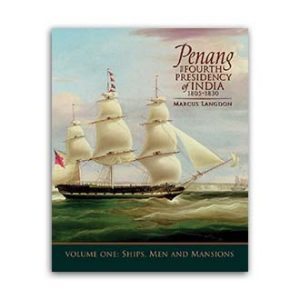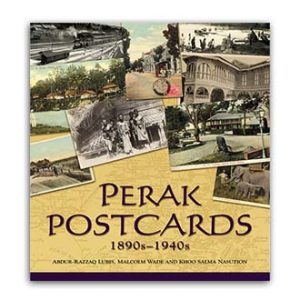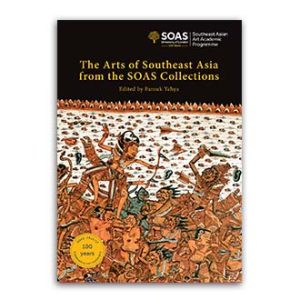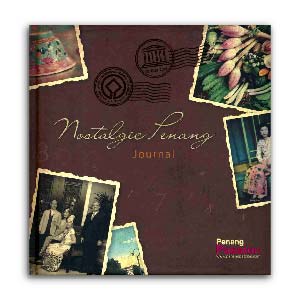By Marcus Langdon.
Filling a major gap in historiography, Marcus Langdon offers a meticulous reconstruction of the formative period of Penang’s development. A little over two centuries ago, Penang had the distinction of being elevated as the fourth most important settlement—a presidency—of the British East India Company’s Indian territories. This significant decision emerged from powerful historical forces that were reshaping the modern world. This included the expansion of international trade networks linking Europe with India and China; the intensification of new patterns of migration in Southeast Asia; and growing rivalries between European powers and their impact on local states. Developments in Penang would also profoundly influence the future growth of British Malaya.
Drawing on unrivalled access to original correspondence, reports, newspapers and contemporary accounts, Penang: The Fourth Presidency of India: Fire, Spice & Edifice continues the in-depth and compelling narrative of a fascinating story. The second of a four-volume series, the focus of Fire, Spice & Edifice is the development of major structures and institutions: Fort Cornwallis, St George’s Church, the Penang Free School, the Public Library and the Spice and Botanic Gardens, and the forces of nature which conspired to thwart the settlement: fire and erosion of the seafront. These intermeshed stories continue the groundwork established in Volume One, highlighting the struggles, successes and failures of the early settlement. Beautifully illustrated with paintings, sketches, engravings and maps – many previously unpublished—Fire, Spice & Edifice and the accompanying volumes will be the authoritative reference for historians and general readers for generations to come.
For further reading, please see our newsletter.
Editorial Reviews
“This major study of the history of early Penang is unquestionably one of the most professionally conceived and well-written works published in an area of Malaysian history.”
Dr ]ohn Bastin, Reader Emeritus in the Modern History of South-East Asia in the University of London.
“A magnificently rich tome. Langdon has accomplished a book that any person interested in Penang’s past cannot do without. It is finely produced with an impressive array of illustrations, and is clearly one of the finest books on the first decades of the island’s history.”
Dr Ooi Kee Beng, Deputy Director, Institute of Southeast Asian Studies, Singapore.
About the Author
Born in England but transplanted to Australia early in life, Marcus Langdon is acknowledged as the leading authority on Penang’s early history under the East India Company. He has published in scholarly journals and his research findings have been widely cited by heritage advocates, architects, conservationists and local historian. He currently lives in Penang.
Table of Contents of Penang: The Fourth Presidency of India 1805–1830, Volume Two: Fire, Spice & Edifice
List of Maps and Illustrations…..x
List of Abbreviations and Acronyms…..xiv
Glossary of Terms…..xv
Note to the Reader…..xvm
Message by YAB Lim Guan Eng, Chairman of George Town World Heritage Incorporated, Chief Minister of Penang…..xxi
Preface…..xxii
Acknowledgements…..xxm
INTRODUCTION…..1
BOOK ONE—FORT CORNWALLIS…..3
Preamble…..4
Trial and error (1786-1800)…..8
Facing adversity (1800-1805)…..53
Best-laid plans (1805-1810)…..63
Setbacks, frustrations and diversions (1810-1811)…..93
Ready for action (1812-1816)…..99
Economic restraint (1820s)…..135
From then until now: a summary…..153
Conclusion…..158
Appendix 1: Lieutenant Governor R.T. Farquhar’s accounts for restoration of Fort Cornwallis, 1804…..160
Appendix 2: Report on landowners near Fort Cornwallis, 1808…..168
Appendix 3: List of military engineers in Penang, 1786-1830…..173
BOOK TWO—FIRES IN GEORGE TOWN…..175
Preamble…..176
Warning signs….176
No bread again today…..183
Double blow…..189
Joy and heartbreak…..200
Rising from the ashes…..207
Lessons learnt and unlearnt…..213
Conclusion…..220
BOOK THREE—THE FREE SCHOOL…..221
Preamble…..222
Inspiration and aspiration…..222
Charity begins at home…..229
New beginnings…..241
Intrigue in the ranks…..251
A change of scene…..254
End of an era…..269
Conclusion…..273
Appendix 1: List of subscribers to the establishment of the Penang Free School, 1816…..275
Appendix 2: List of subscribers to the establishment of a boarding school, 1826…..277
BOOK FOUR—ST GEORGE’S CHURCH…..279
Preamble…..280
Making do…..283
Best-laid plans…..296
A vision rises…..315
Open at last…..347
The Mission Chapel and Armenian Church…..363
Memorials…..368
Comings and goings…..373
Conclusion…..393
Appendix 1: Plan and key of memorial tablets prior to 1941…..395
Appendix 2: List of chaplains…..396
BOOK FIVE—THE SPICE AND BOTANIC GARDENS…..397
Preamble…..398
Hopes and opportunities…..399
Spices and the first Botanic Garden…..405
Questions and answers…..420
Politics of change…..448
The second Botanic Garden…..462
The seeds are sown…..471
Catalysts of change…..480
Demise of the Botanic Garden…..484
The legacy…..489
Conclusion…..491
Appendix 1: Memorandum of plants required per Robert Kyd’s letter to Francis Light, dated 11 March 1788…..493
Appendix 2: Plant numbers shipped on Smith’s first expedition to the Molucca Islands…..495
Appendix 3: Plant numbers shipped on Smith’s second expedition to the Molucca Islands…..496
Appendix 4: List of plants in the Botanic Garden, prepared by George Porter on 19 Iuly 1824…..497
BOOK SIX—THE LIBRARY…..501
Preamble…..502
A promising beginning…..503
A problem of patronage…..511
Abuse of privilege…..517
Struggle for survival…..522
Conclusion…..526
BOOK SEVEN—BATTLING THE SEA…..529
Preamble…..530
Action of the surf…..531
Best intentions…..539
Conclusion…..545
CONCLUSION…..547
Bibliography…..551
Index…..555









